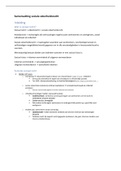Samenvatting
Summary Statistical Computing (JBM050)
A short summary discussing the Statistical Computing JBM050 course for the bachelor Data Science in Tilburg and Eindhoven. This summary is based on the lectures and the reading materials.
[Meer zien]













